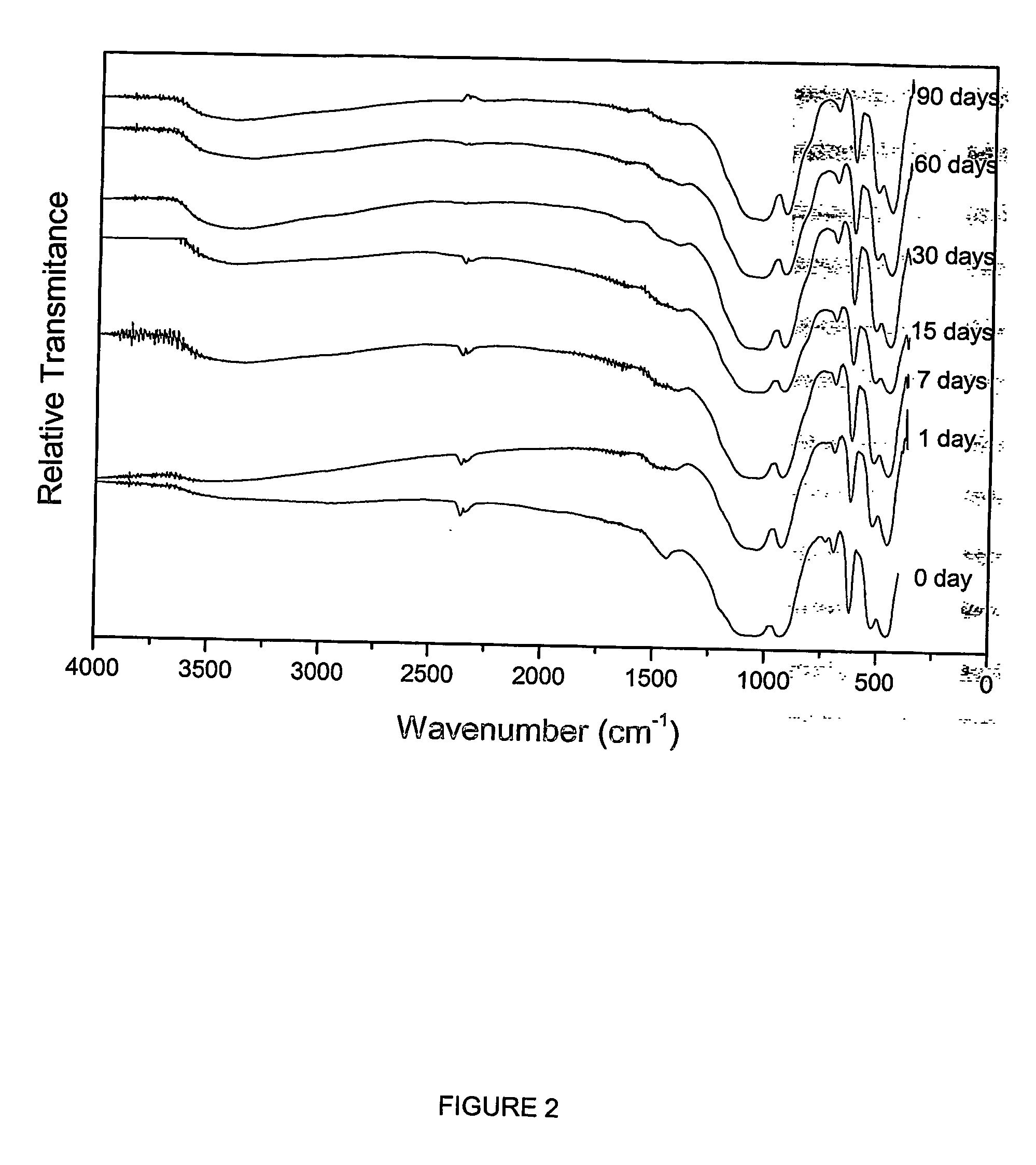Process and compositions for preparing particulate, bioactive or resorbable biosilicates for use in the treatment of oral ailments
a bioactive or resorbable biosilicate and composition technology, applied in the direction of drug compositions, applications, impression caps, etc., can solve the problems of reducing the analgesic effect provided, not providing a long-term solution, and returning to pre-treatment sensitivity levels, so as to avoid aggression to oral mucosae and excessive tooth wear, and minimize the effect of oral mucosa
- Summary
- Abstract
- Description
- Claims
- Application Information
AI Technical Summary
Benefits of technology
Problems solved by technology
Method used
Image
Examples
Embodiment Construction
Process for Preparing the Particulate Crystalline Biosilicates
[0066] A first aspect of the invention is a process for preparing particulate crystalline biosilicates.
[0067] According to the invention, one mode of the process for preparing the particulate, crystalline biosilicates from vitreous plates or frits comprises the following steps:
[0068] Submitting the vitreous pieces to thermal treatment with the simultaneous promotion of the crystal nucleation and growth at temperatures between 400° C. and 1050° C. for 1 hour to 150 hours preferably between 500° C. and 700° C. for 3 hours to 100 hours, more preferably between 560° C. and 670° C. for 10 hours to 50 hours, obtaining a crystallized silicate;
[0069] Milling the crystallized silicate until the desired particle size distribution, and obtaining the particulate crystalline biosilicate.
[0070] The rather broad temperature and time ranges set forth in item a) are due to the huge variation in chemical composition that is possible ...
PUM
| Property | Measurement | Unit |
|---|---|---|
| Length | aaaaa | aaaaa |
| Length | aaaaa | aaaaa |
| Fraction | aaaaa | aaaaa |
Abstract
Description
Claims
Application Information
 Login to View More
Login to View More - R&D
- Intellectual Property
- Life Sciences
- Materials
- Tech Scout
- Unparalleled Data Quality
- Higher Quality Content
- 60% Fewer Hallucinations
Browse by: Latest US Patents, China's latest patents, Technical Efficacy Thesaurus, Application Domain, Technology Topic, Popular Technical Reports.
© 2025 PatSnap. All rights reserved.Legal|Privacy policy|Modern Slavery Act Transparency Statement|Sitemap|About US| Contact US: help@patsnap.com



